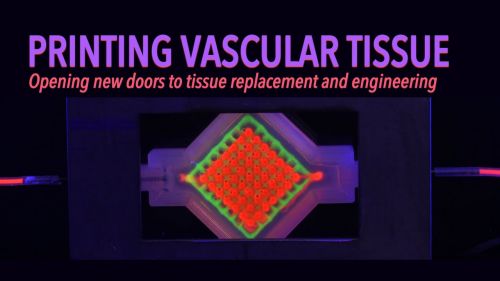Printing Vascular Tissue
Printing vessel vasculature is essential for sustaining functional living tissues. Until now, bioengineers have had difficulty building thick tissues, lacking a method to embed vascular networks.
A 3D bioprinting method invented at the Wyss Institute and Harvard SEAS embeds a grid of vasculature into thick tissue laden with human stem cells and connective matrix. Printed within a custom-made housing, this method can be used to create tissue of any shape.
Once printed, an inlet and outlet own opposite ends are perfused with fluids, nutrients, and cell growth factors, which control stem cell differentiation and sustain cell functions. By flowing growth factors through the vasculature, stem cells can be differentiated into a variety of tissue cell types.
This vascularized 3D printing process could open new doors to tissue replacement and engineering.
Source: Wyss Institute
Read more: wyss.harvard.edu
– Bio-Printing Transplantable Tissues, Organs: Another Step Closer
– 3D Bioprinting
– 3D Printing
– 3D Printers
– Regenerative Medicine
– Stem Cells
– The Future of Medicine

| Tweet |











